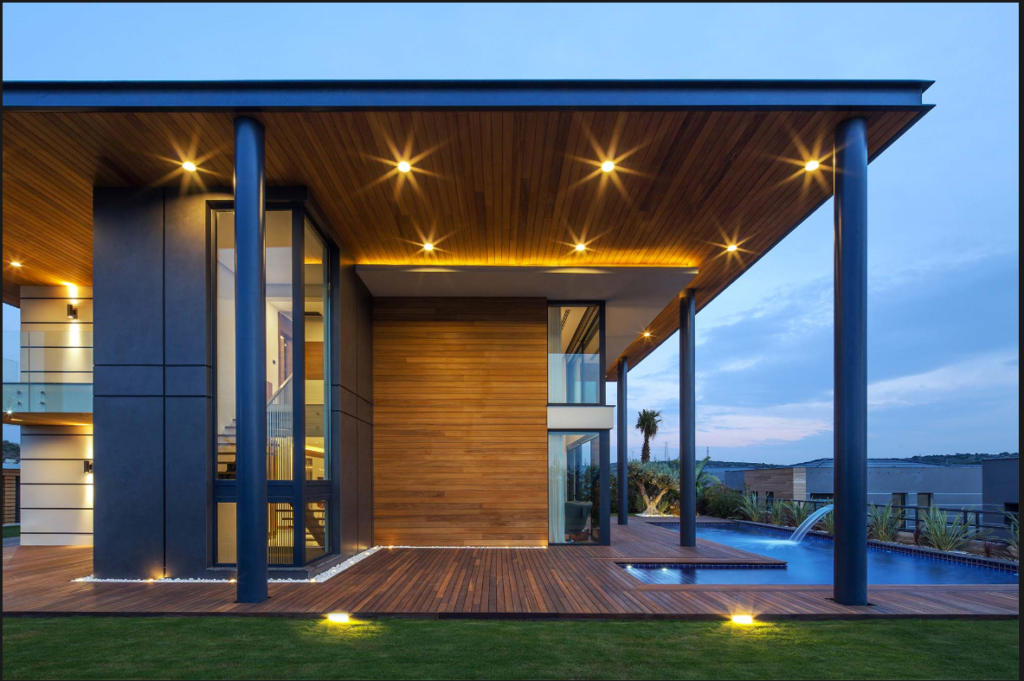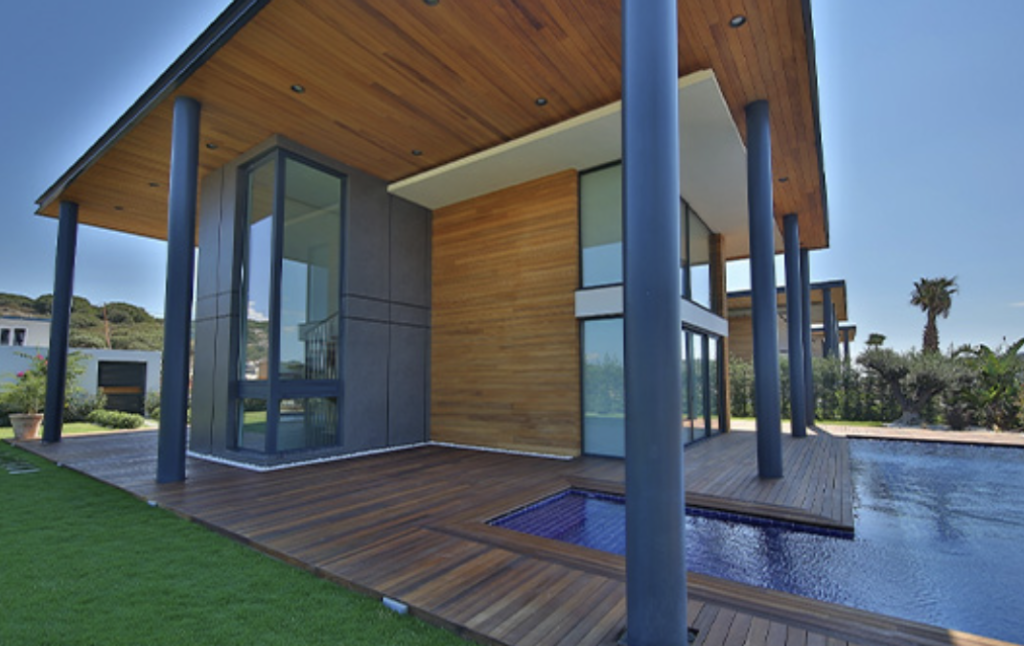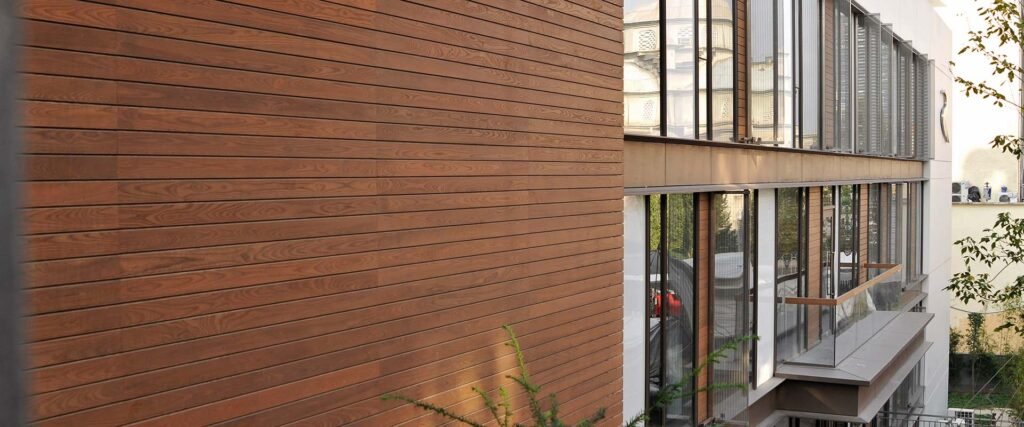When selecting materials for sauna construction and cladding, the choice of wood is critical. Cedar and thermally treated wood are two prevalent choices, each with their own unique characteristics and benefits. This article offers a straightforward comparison to help homeowners and contractors make an informed decision.
Understanding the Basics
What is Thermowood?

Thermowood is a result of advanced wood heat treatment technology, and its origins can be traced back to research in the 1930s. Developed by the Finland Research Center VTT, this process involves heating the wood up to 356°F under protective steam conditions. This thermal modification fundamentally alters the wood’s chemical and physical properties in order to enhance its durability and resistance to decay.
The Thermo Modification process involves three key stages:
1. Drying Stage

Rapidly increasing the oven temperature to 212°F and then steadily to 266°F, this stage reduces the wood’s moisture content to nearly zero, which prepares it for the next phase of treatment.
2. Heat Treatment Stage
Here, the temperature inside the wood is increased to 356ºF (for interior applications) or up to 413.6ºF (for exterior applications), and is maintained for 2-3 hours. This step is crucial for achieving the desired stability and durability.
3. Cooling and Humidification Stage
The final stage involves reducing the wood’s temperature to 176-194°F and adjusting its moisture content to 4-6% using a water spray system.
This process not only increases the wood’s stability, it also minimizes post-installation movement and warping. It enhances the wood’s insulation properties and results in a distinct color change due to the caramelization of glucose within the wood.
Characteristics of Cedar Wood
Cedar stands out as a top choice for sauna construction due to its unique combination of properties.
- Known for its aromatic scent, cedar enhances the sauna experience with its calming aroma and contributes to a healthier environment due to its mild antifungal and antibacterial properties.
- It’s also highly durable and naturally resistant to decay and insects, which is crucial in the humid, high-temperature conditions of saunas.
- Cedar’s excellent insulating properties help maintain consistent temperatures efficiently.
- Its rich, warm tones and straight grain add a natural aesthetic appeal to sauna interiors, which makes it as visually pleasing as it is functional.
Comparing Durability and Longevity
Thermally treated wood’s heat treatment process greatly enhances its durability, which makes it an ideal choice for areas exposed to moisture and temperature changes, like saunas. The process strengthens the wood against decay and fungal attacks, and extends its lifespan, up to 35+ years with proper maintenance.
Cedar, while naturally tough and resistant to rot and insects, may not hold up as long under the same conditions. Its natural oils provide good protection, but over time, cedar can show wear from constant humidity and temperature shifts. Cedar lifespan is lower, lasting between 20-30 years.
Thermally modified wood, with its altered cellular structure, tends to resist these changes better, which results in less warping and maintenance.
Maintenance and Environmental Impact
Maintenance Needs
Thermally modified wood requires minimal maintenance due to its resistance to warping and stability in various environmental conditions. In contrast, cedar, though robust, requires more attention due to its natural properties and susceptibility to moisture.
Environmental Considerations
Thermowood’s production is considered environmentally-friendly, that involves less energy and lower emissions. Cedar, a natural product, has a more significant environmental footprint due to its harvesting and processing methods.
Aesthetic and Functional Differences
Aesthetic Appeal
Cedar offers a classic, warm appearance with a rich, reddish-brown hue.
Thermowood, on the other hand, has a more uniform and contemporary look with a consistent caramel color.
The choice between the two depends on the desired aesthetic.
Sensitivity to Temperature and Health Impacts
Thermo treated wood remains stable under temperature fluctuations for consistent performance.
Cedar’s sensitivity to temperature changes may lead to structural alterations. Cedar’s natural oils, while aromatic, could cause allergic reactions in sensitive individuals.
Price Point and Accessibility
In terms of cost, thermowood—including Thermal Ayous and Thermo Pine—is generally more expensive, though the difference in cost is minimal. In fact, the prices of thermowood often remain competitive with cedar because the thermally treated wood lasts longer and requires less maintenance.
Cedar, more readily available, may seem likely a cost-effective choice, but it can incur higher maintenance costs in the long run—costs which could have been avoided by choosing a slightly more expensive wood in the beginning.
Personal and Expert Experiences
User Experiences
Users of both cedar and thermo treated saunas report satisfaction with their choices. Cedar enthusiasts appreciate its natural aroma and classic look, while thermowood users value its durability and consistent appearance.
Expert Opinions
Experts in sauna construction and wood technology often recommend thermowood for its advanced properties, such as enhanced durability and minimal maintenance requirements. Cedar is lauded for its traditional appeal and natural characteristics.
Making the Right Choice for Your Sauna
When deciding between cedar and thermowood for sauna and cladding applications, it’s important to consider factors like durability, maintenance, environmental impact, and personal preferences. Both woods have their advantages, so the best choice depends on your specific needs and values.
Whether you’re drawn to the classic appeal of cedar or the engineered stability of thermowood, both options can provide a satisfying sauna experience.


